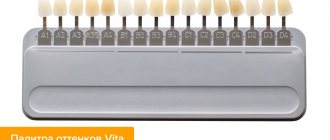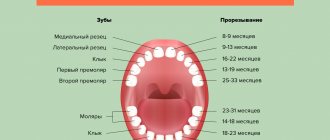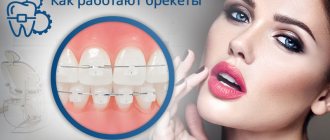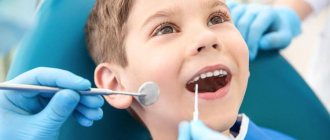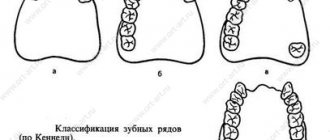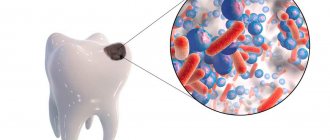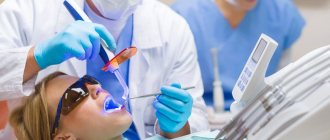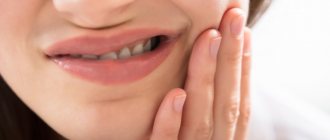The Bio-Vet network of veterinary clinics provides dental services to your dogs.
It must be remembered that oral care is also very important in animals. This is not only a well-groomed appearance, but also a guarantee of your dog’s health.
CLINIC REGISTRATION
HOME CALL
Currently, cats and dogs live in completely different conditions than their ancestors lived.
Nowadays, animals do not need to cut up their prey before eating it, which means their teeth are not cleaned. Dogs at home live longer, and the strength of their teeth is insufficient.
When should you take your dog to the dentist?
If you care about your pet’s oral hygiene and perform hygienic cleaning 1-2 times a week, then you can visit the dentist once every six months or a year.
If your animal constantly has an unpleasant odor from its mouth, then you should rush to the dentist.
If a dog has red gums, drooling, the animal refuses to eat, and the animal may ask to eat, sit at the bowl, but not eat, you should immediately show the animal to the dentist.
It is not uncommon for an animal to have one eye watery and swollen when an abscess matures in the mouth, and there is profuse drooling. In this case, it is also worth visiting a veterinary dentist.
A veterinarian-dentist not only removes tartar from dogs and cats, but also checks the condition of the teeth. For example, during an examination you may see exposure of the alveolar socket, which leads to tooth loss. To prevent tooth loss, the doctor may perform splinting. This is the installation of special dental bridges.
In our clinic, we grind teeth after ultrasonic cleaning and coat the teeth with a special agent to restore enamel. This prevents plaque formation for a longer period.
A veterinary dentist can also, if necessary, install a filling and even braces. The dentist removes milk teeth, which often do not fall out on their own in dogs, which leads to changes in the bite. The dentist diagnoses various neoplasms in the oral cavity.
How long do you need to wear braces for different types of occlusion?
How does a brace system work to correct a bite? This design gradually moves the teeth into the correct position. At the same time, when moving, the bone tissue is gradually destroyed, and later, when the tooth gets into the “right place,” it grows. All these processes take a long period of time.
The time for correcting a bite with braces depends on the type of pathology, materials of the orthodontic structure, the qualifications of the orthodontist, the physiological characteristics and motivation of the patient.
Distal occlusion: how many years are braces worn to correct it?
Distal occlusion is a rather complex pathology, so the duration of correction directly depends on the chosen treatment method, the patient’s concomitant pathologies, as well as the age at which treatment begins. Thus, in childhood, wearing braces can take 8-12 months, and in adults, bite correction can take up to 2-2.5 years.
Open bite: how long should you wear braces?
Correcting an open bite with braces in adults takes on average two years or longer. In adulthood, bone growth stops, so in some clinical cases orthodontic surgery is required. The operation can shorten the treatment period by approximately half.
Mesial bite: how long does it take to correct?
The period of correction of mesial occlusion depends on the age, constitutional characteristics of the patient, as well as on the choice of orthodontic design. In adults, treatment can take up to 2.5-3 years. In an earlier period, correction can last from a year to two.
How long to wear braces for deep bites?
In childhood, treatment begins with removable/fixed orthodontic appliances and myogymnastics. Braces are installed only on permanent teeth around adolescence. All these treatment methods take a much shorter period of time than bite correction in adults.
Treatment of deep bites in adults with braces can take up to three years. In some cases, complete correction is only possible through orthodontic surgery.
How long do you wear braces for a crossbite?
The treatment period for crossbite with braces ranges from 1 to 3 years, depending on the age and physiological characteristics of the patient.
Other factors that affect the length of time you wear braces
In addition to the type of bite, the timing of wearing braces is affected by:
- Patient's age;
- The number of permanent and temporary teeth in the oral cavity;
- Physiological characteristics of the patient (eg, bone growth processes);
- Selection of design for treatment;
- Choosing an orthodontist.
When choosing a specialist, pay attention not only to the doctor’s experience, but also to the comfort during communication. An orthodontist is the doctor with whom you will have to maintain communication for several years, so it is very important that your views on effective treatment completely coincide.
Orthodontist, Butorina Irina Aleksandrovna, has extensive experience in the field of correction of all types of occlusion. You can make an appointment with a specialist by phone.
Different braces – how long to wear?
The choice of materials from which braces are made to correct malocclusion can also affect the length of time they are worn:
- Metal braces are the most durable structures that exert maximum forces on tooth movement. The wearing period of such structures ranges from one to two years.
- Ceramic braces are very aesthetic braces with less force to move teeth. The period of wearing ceramic braces increases by 3-4 months (compared to metal ones).
- Sapphire braces – in terms of wearing time, these braces are similar to ceramic ones. However, sapphire braces require better oral hygiene.
How long does it take to wear braces depending on age?
In childhood, the bones of the facial skeleton continue to grow, so orthodontic structures can quickly affect the direction of jaw development. Typically, before permanent teeth appear in children, orthodontists correct bites without braces. Treatment methods include removable plates, myogymnastics, and fixed devices.
After 18-20 years, the growth of the facial skeleton stops, the muscles become less elastic, and the periodontium is less pliable, so all tooth movements proceed more slowly. That is why the effectiveness of treatment in childhood is much higher than in older age.
Prices for dental services for dogs
| Name of veterinary services | Unit | Price, rub |
| Tooth extraction: | ||
| Primary (incisors, premolars,) | 1 tooth | 200 |
| Dairy (canines, molars,) | 1 tooth | 450 |
| Permanent (incisors) | 1 tooth | 550 |
| Permanent (canines, premolars, molars) | 1 tooth | from 1100 |
| Trimming incisors in rodents | 1 animal | 300 |
| Ultrasound removal of tartar | 1 animal | from 1650 |
APPOINTMENT AT THE CLINIC
HOME CALL
Bite correction: which age is best?
Puppies are born toothless! The incisors appear first, by about a month, followed by the canines and the last premolars (5-6 weeks). There are fewer “children’s” teeth, only 28; after changing permanent teeth at 4-6 months, there are 42. They are larger, the enamel is yellower and stronger.
The following are considered abnormal in quantity:
- oligodontia (incomplete set of permanent teeth);
- polio- or hyperdontia.
The last two concepts refer to the presence of extra teeth. According to the norm, by 7 months the dog’s teeth should completely change and premolars and molars, for which there are no milk predecessors, should grow.
Consequences of lack of dental care
In the absence of care for the animal's oral cavity, unpleasant consequences appear after 2-3 years: weak gums, toothache, tooth loss, mineral deposits. To avoid such problems, it is worth visiting a veterinary dentist several times a year and performing ultrasonic teeth cleaning.
I would also like to note that when examining an animal’s oral cavity, other hidden diseases of your pet are often discovered. For example, in dogs it can indicate functional problems of the genitourinary system.
Our dentists also recommend not to neglect brushing your teeth at home. This should be done with a special brush and paste for dogs or cats. This should be done 1-2 times a week.
APPOINTMENT AT THE CLINIC
HOME CALL

